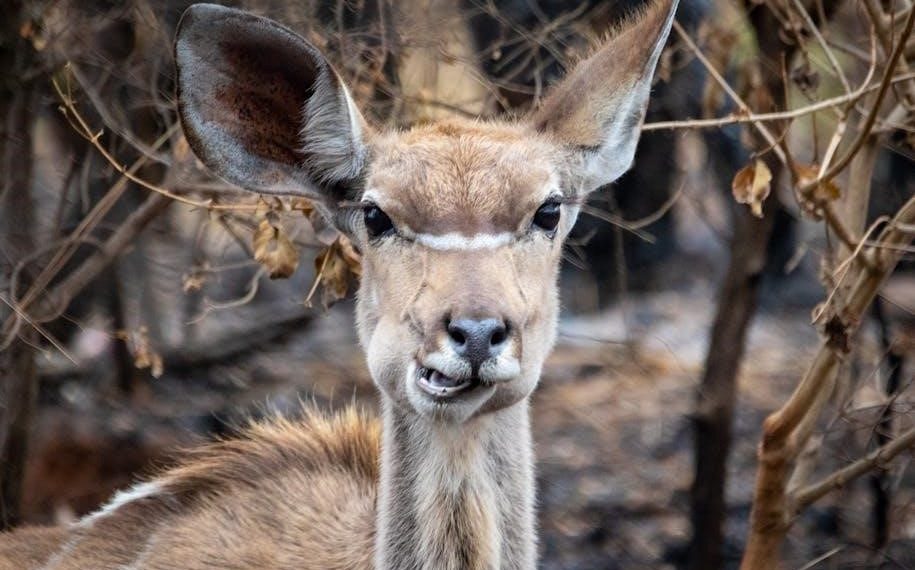south dakota mule deer guides
South Dakota mule deer guides offer expert knowledge and skills to ensure successful hunting experiences. Their deep understanding of local terrains and deer behavior enhances hunting strategies and outcomes.
1.1 Overview of Mule Deer Hunting in South Dakota
South Dakota is renowned for its thriving mule deer population, offering exceptional hunting opportunities across diverse landscapes. The state’s vast prairies, rolling hills, and rugged terrains provide ideal habitats for these majestic creatures. Mule deer hunting in South Dakota is highly regulated to ensure sustainable populations, with seasons typically running from September to November. Hunters can pursue deer on both public and private lands, with archery and rifle seasons offering unique challenges and experiences. The state’s reputation for large bucks attracts hunters nationwide, making it a premier destination for mule deer enthusiasts.
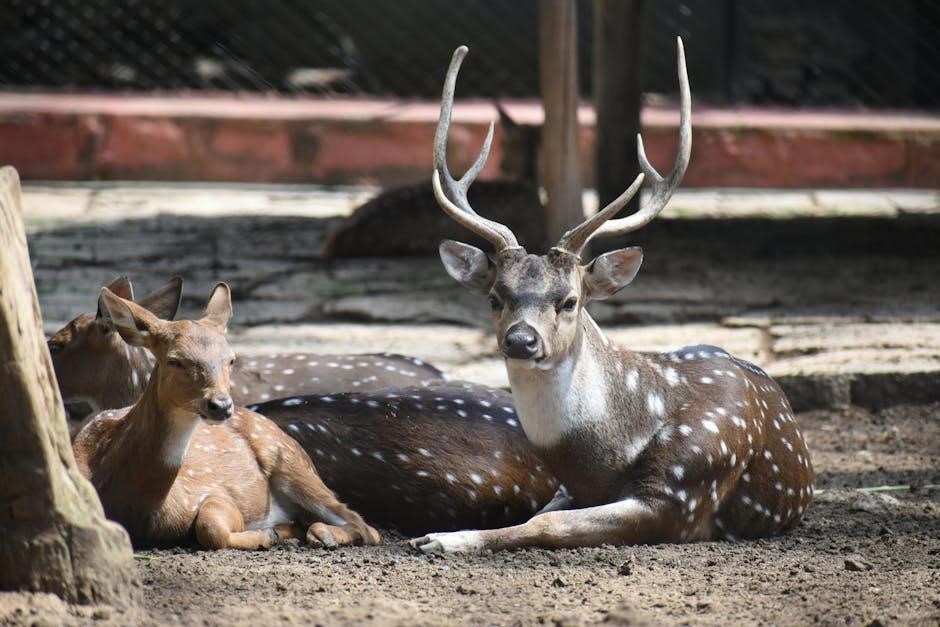
1.2 Importance of Guides for Successful Hunts
Hiring an experienced guide significantly enhances the likelihood of a successful mule deer hunt in South Dakota. Local guides possess intimate knowledge of deer habitats, movement patterns, and feeding areas, ensuring hunters are in the right place at the right time. They also understand state regulations, minimizing legal risks. Guides often provide essential gear, transportation, and field expertise, allowing hunters to focus on their game. Their expertise is particularly valuable for out-of-state hunters unfamiliar with South Dakota’s terrain and deer behavior, making guides indispensable for maximizing hunting success and efficiency.
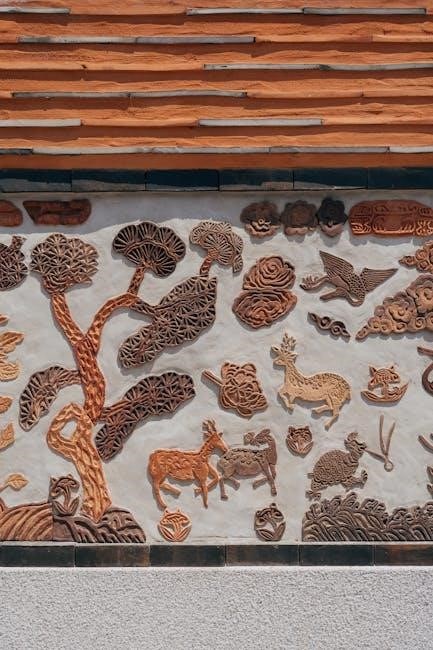
Top-Rated South Dakota Mule Deer Guides and Outfitters
South Dakota boasts reputable mule deer guides and outfitters known for their expertise, offering high-success hunting experiences with quality gear and unparalleled local knowledge.
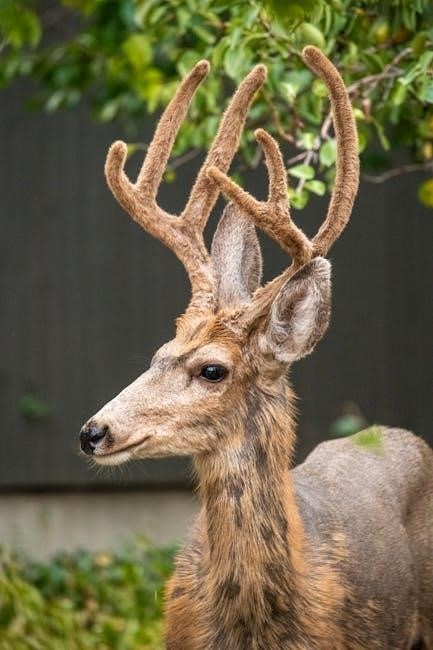
2.1 Recommended Guide Services
South Dakota’s top-rated mule deer guides offer exceptional hunting experiences, combining local expertise with proven strategies. These professionals provide access to prime hunting locations, ensuring higher success rates. Many guide services include experienced trackers, high-quality equipment, and pre-scouted areas. Reputable outfitters often have exclusive access to private lands, increasing opportunities to harvest trophy bucks. Their deep knowledge of mule deer behavior and habitats maximizes the chances of a successful hunt. Choosing a trusted guide service is a key factor in making unforgettable memories in South Dakota’s vast wilderness.
2.2 Customer Reviews and Testimonials
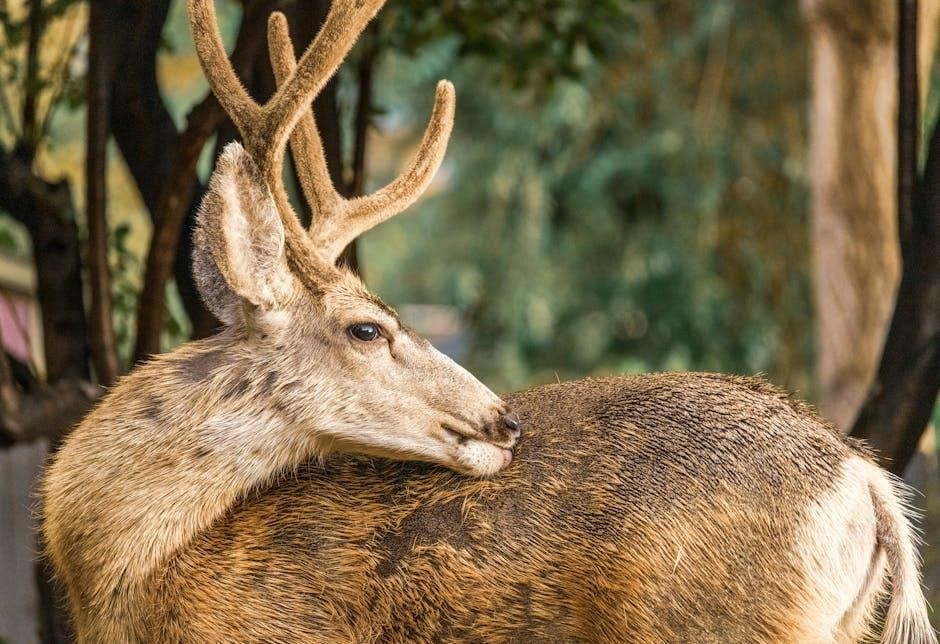
Customers praise South Dakota mule deer guides for their professionalism and expertise. Many hunters highlight the high success rates and memorable experiences provided by these guides. Testimonials often mention the guides’ deep knowledge of local terrain and their ability to adapt strategies. Clients also appreciate the personalized service and camaraderie, making the hunting trips enjoyable and rewarding. Positive reviews frequently emphasize the guides’ commitment to ethical hunting practices and their dedication to ensuring a successful and fulfilling adventure for all skill levels.
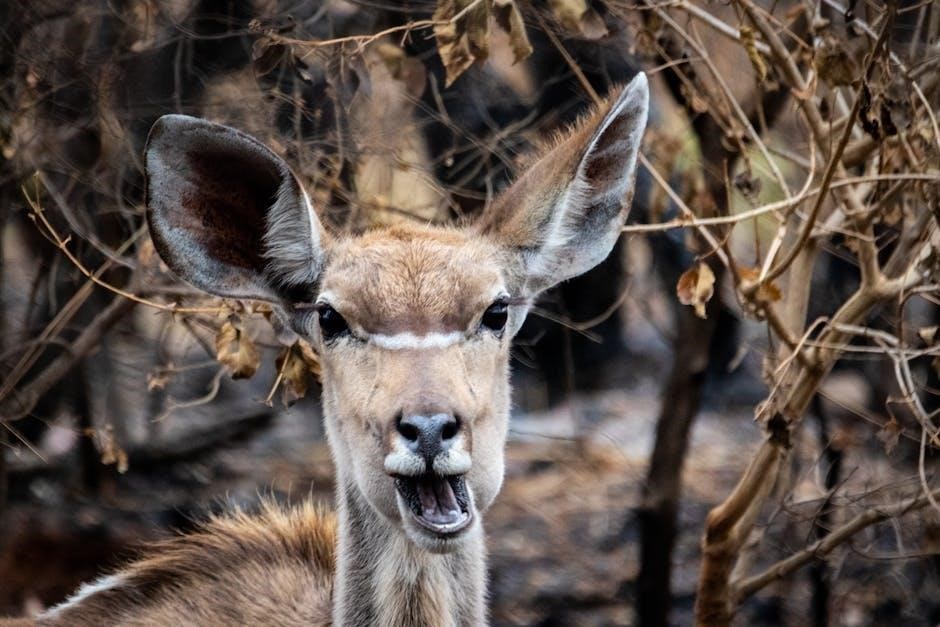
Best Hunting Areas for Mule Deer in South Dakota
South Dakota offers prime mule deer habitats, with public lands and private ranches providing diverse terrain. Key regions include the Black Hills and prairie areas, known for abundant deer populations and scenic landscapes, making them ideal for both archery and rifle hunts.
3.1 Public Lands and Wildlife Management Areas
South Dakota’s public lands and wildlife management areas provide extensive opportunities for mule deer hunting. The Black Hills National Forest and Buffalo Gap National Grassland are renowned for their diverse terrain and healthy deer populations. These areas offer accessible hunting grounds, with scattered woodlands, rocky outcrops, and open prairies. Hunters can explore millions of acres, but must adhere to specific regulations and permits. Public lands are ideal for those seeking a challenging yet rewarding experience, with abundant wildlife and scenic landscapes that define South Dakota’s outdoor heritage.
3.2 Private Ranches and Exclusive Hunting Properties
Private ranches and exclusive hunting properties in South Dakota offer premium mule deer hunting experiences. These areas, often managed for trophy-quality deer, provide controlled access and minimal hunting pressure. Guides frequently partner with landowners to access these prime locations, which feature diverse terrain such as rolling hills, timbered draws, and river bottoms. Hunters benefit from higher success rates and the opportunity to pursue larger bucks in a more secluded setting. These properties are a top choice for those seeking a tailored and productive hunting experience.
Seasonal Considerations for Mule Deer Hunting
Seasonal factors significantly influence mule deer behavior and hunting success in South Dakota. Weather, rut timing, and habitat use vary, requiring adaptive strategies for different times of year.
4.1 Archery Season
South Dakota’s archery season for mule deer typically begins in late September and runs through October. This period offers a unique challenge, as hunters must navigate early-season terrain and weather conditions. Archers benefit from the rut, which increases deer activity, but require stealth and precision. Guides play a crucial role in locating bucks and understanding their patterns. Proper physical conditioning and practice are essential for success. The season’s earlier dates mean cooler weather and less vegetation, making it ideal for spotting deer in open habitats.
4.2 Rifle Season
South Dakota’s mule deer rifle season typically occurs in November and December, offering hunters an exciting opportunity to harvest bucks in cooler conditions. During this period, deer often group together, making them more visible but less active during daylight. Hunters must contend with potential snow and colder temperatures, which can enhance spotting but also pose challenges. Guides are invaluable as they know where herds tend to congregate and can navigate the terrain effectively. Rifle season requires precise accuracy and the right equipment to ensure a successful hunt.
4.3 Late Season Opportunities
South Dakota’s late mule deer season offers unique opportunities for hunters willing to brave colder conditions. During December and early winter, deer congregate in lower elevations, seeking food and shelter. This period often sees larger bucks appearing as mating season winds down. While challenging due to harsh weather, late-season hunts can be rewarding with the right strategy. Guides excel in locating deer in winter habitats and navigating snow-covered terrain, making them crucial for success during this period.
Licensing and Regulations
Obtaining the correct licenses and understanding regulations is crucial for mule deer hunting in South Dakota. Guides ensure compliance with state laws and permit requirements.
5.1 Obtaining Hunting Licenses
To hunt mule deer in South Dakota, you must obtain the appropriate licenses through the South Dakota Department of Game, Fish and Parks. Non-residents and residents require specific permits, with varying fees. Licenses can be purchased online or at local vendors. Archery and rifle licenses are available, along with special permits for mule deer. Application deadlines and limited draw areas must be considered; Guides often assist hunters in navigating the licensing process, ensuring compliance with state regulations. Proper licensing is essential for legal and ethical hunting practices in South Dakota.

5.2 Bag Limits and Harvest Reporting
In South Dakota, mule deer hunting is regulated by strict bag limits to ensure sustainable populations. Hunters are typically allowed one mule deer per season, with specific restrictions on bucks or does depending on the region. Harvest reporting is mandatory, requiring hunters to document and submit their harvest data to wildlife authorities. Guides often help hunters understand these regulations and ensure compliance. Adhering to bag limits and reporting requirements is crucial for maintaining healthy deer populations and upholding ethical hunting practices in South Dakota’s wildlife management efforts.
Gear and Equipment Essentials
Essential gear for mule deer hunting includes durable rifles, high-quality optics, and sturdy footwear. Camouflage and scent-blocking apparel enhance stealth, while field gear supports long-distance treks.
6.1 Rifles and Optics
Choosing the right rifle and optics is critical for mule deer hunting in South Dakota. A reliable, high-caliber rifle such as a .270 or .300 Winchester Magnum is ideal for long-range shots. Pair it with a high-quality scope featuring adjustable magnification for clarity at varying distances. Binoculars are essential for spotting deer in open terrain, while rangefinders help estimate distances accurately. Durable, waterproof optics are a must to withstand harsh weather conditions. Guides often recommend scopes with 4-12x magnification for versatility in different hunting scenarios.
6.2 Camouflage and Hunting Apparel
Effective camouflage and appropriate hunting apparel are vital for mule deer hunting in South Dakota. Choose patterns like Realtree or Mossy Oak to blend into the terrain. Layered clothing is essential due to fluctuating weather conditions, with breathable base layers, insulating mid-layers, and waterproof outerwear. Opt for muted colors and avoid shiny accessories to remain stealthy. A good pair of durable, waterproof boots is crucial for long hikes. Scent-control fabrics or sprays can also help minimize human odor, improving your chances of getting close to mule deer undetected.
6.3 Field Gear for Long-Distance Hunts
For long-distance mule deer hunts in South Dakota, essential field gear includes a durable backpack, water hydration systems, and energy-rich snacks. A portable stove or water purification tablets can be lifesavers. Navigation tools like GPS devices or topographic maps ensure you stay on track. Extra clothing layers, rain gear, and a lightweight tent provide shelter in unpredictable weather. A first aid kit, headlamp, and multi-tool are must-haves for emergencies. Trekking poles can aid in navigating rough terrain. Always prioritize lightweight, reliable gear to maintain mobility and comfort during extended pursuits.
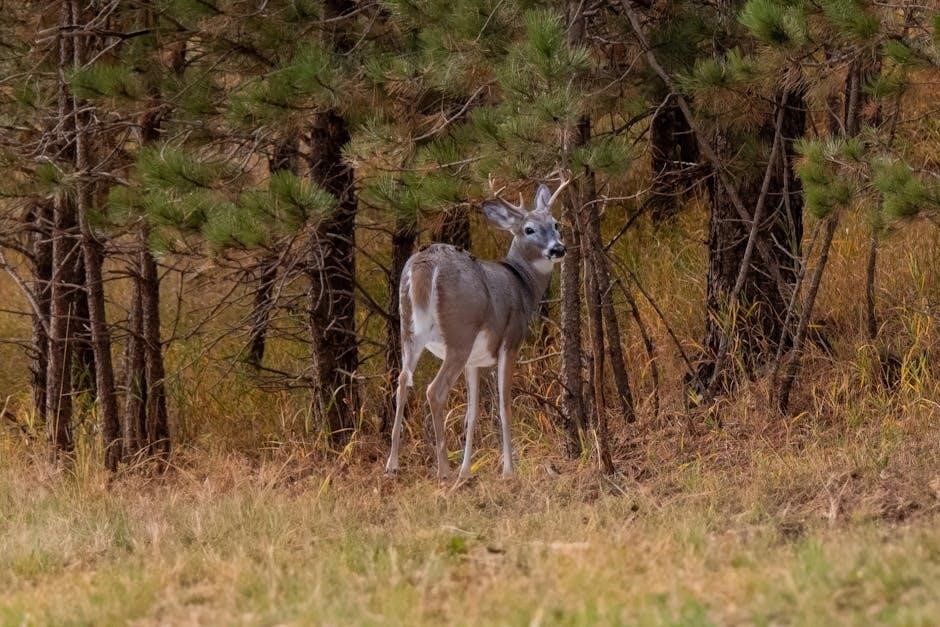
Hunting Techniques and Strategies
Effective mule deer hunting in South Dakota combines still-hunting with ambush tactics, using terrain cover and wind direction to stay undetected. Patience and understanding deer behavior are key.
7.1 Scouting and Tracking Mule Deer
Scouting is critical for identifying mule deer habitats and movement patterns in South Dakota. Guides often use trail cameras and glassing techniques to locate deer before the hunt. Tracking involves recognizing hoof prints, rubs, and bedding areas, which reveal deer activity. Understanding wind direction and thermal currents helps predict movement. Preseason scouting ensures hunters are positioned in high-traffic zones during key periods. Expert guides know how to interpret signs and adapt strategies based on seasonal deer behavior, maximizing the chances of a successful hunt.
7.2 Effective Calling and Stalking Methods
Effective calling involves mimicking mule deer vocalizations, such as bleats or grunts, to attract bucks during rutting season. Guides often use calls like doe bleats or fawn distress sounds to lure deer. Stalking requires patience and stealth, utilizing cover like hills, trees, and wind direction to approach undetected. Experts recommend slow, deliberate movements to avoid spooking deer. Combining calling with strategic stalking increases the likelihood of close encounters. Guides typically use optics to spot deer first, then devise a plan to stalk within shooting range, ensuring a successful and ethical harvest.
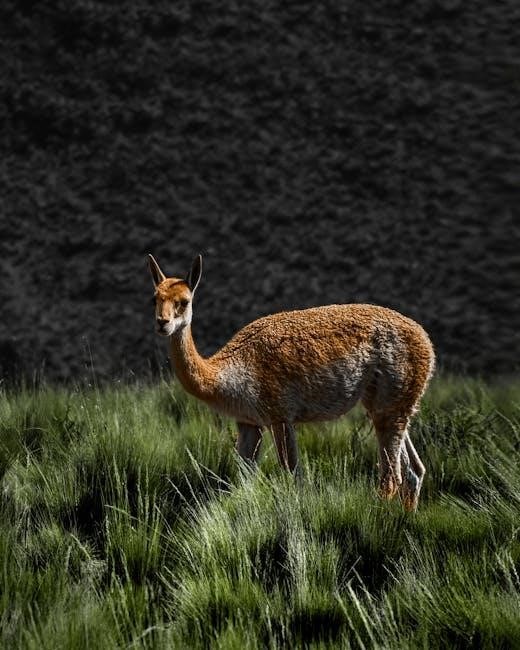
Conservation Efforts in South Dakota
South Dakota prioritizes mule deer conservation through habitat restoration and sustainable hunting practices, ensuring a healthy population for future generations while maintaining ecological balance.
8.1 Habitat Preservation Programs
South Dakota’s habitat preservation programs focus on restoring and protecting natural environments crucial for mule deer. Initiatives include native grassland restoration, water source management, and combating invasive species. These efforts ensure sustainable habitats, supporting mule deer populations and enhancing hunting opportunities; Collaborations with conservation organizations further strengthen these programs, promoting biodiversity and ecological balance.
8.2 Role of Guides in Sustainable Hunting Practices
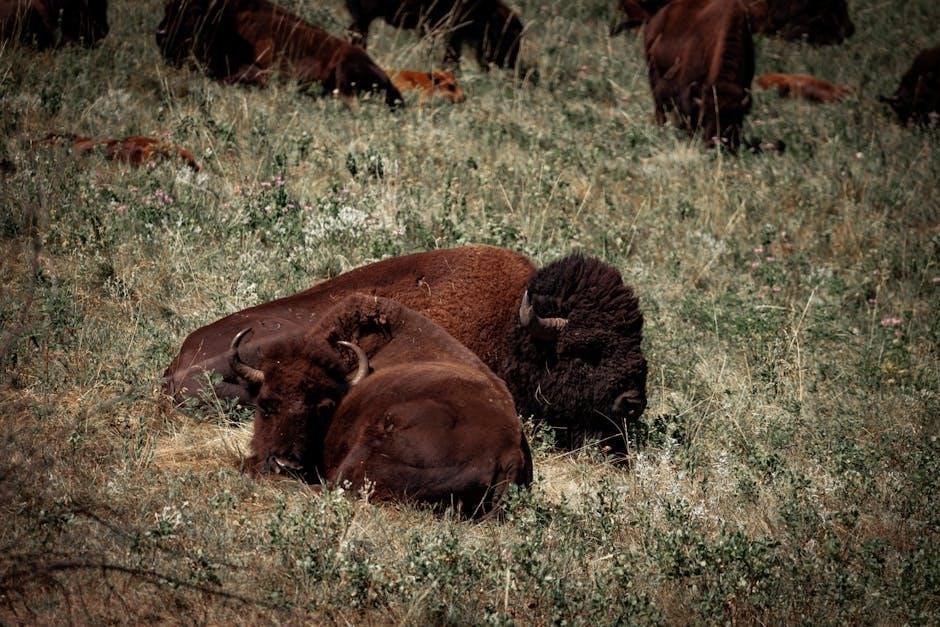
Guides play a vital role in promoting sustainable hunting practices in South Dakota. They educate hunters on ethical practices, ensuring adherence to regulations and minimal environmental impact. By emphasizing selective harvesting and responsible land use, guides help maintain healthy mule deer populations. Their expertise in habitat management and wildlife behavior supports conservation efforts, fostering a balance between hunting and ecosystem preservation. This commitment ensures the long-term sustainability of mule deer hunting in South Dakota.
Planning Your Hunt
Planning your hunt involves thorough research, timing, and preparation. Book guides early, secure permits, and ensure gear readiness. Physical conditioning and mental preparation are crucial. Check weather forecasts and hunting regulations to maximize success and safety.
9.1 Booking a Guide or Outfitter
Booking a reputable guide or outfitter is essential for a successful mule deer hunt in South Dakota. Research and compare services, focusing on experience, local knowledge, and reputation. Ensure the guide is familiar with the terrain and has access to prime hunting areas. Many outfitters offer full-service packages, including lodging, meals, and gear transportation. Book early, as demand is high during peak seasons. Clearly communicate your expectations and budget to find the best fit for your hunting goals and preferences.
9.2 Pre-Hunt Preparation and Tips
Pre-hunt preparation is critical for a successful mule deer hunt in South Dakota. Ensure you are physically conditioned for long hikes and varied terrain. Check and maintain your gear, including rifles, optics, and apparel. Familiarize yourself with the terrain using maps or GPS. Study weather forecasts and pack layers for unpredictable conditions. Practice marksmanship and stalking techniques beforehand; Understand mule deer behavior, including feeding patterns and bedding areas. Lastly, mentally prepare for the challenges of the hunt to stay focused and patient.
South Dakota offers exceptional mule deer hunting experiences, with professional guides ensuring success and unforgettable adventures in its vast landscapes.
10.1 Final Thoughts on Mule Deer Hunting in South Dakota
South Dakota stands as a premier destination for mule deer hunting, offering abundant opportunities to connect with nature and harvest trophy bucks. The state’s diverse terrain, from rolling prairies to rugged hills, creates a challenging yet rewarding experience for hunters of all skill levels. With conservation efforts ensuring healthy deer populations and expert guides providing invaluable insights, hunters can expect unforgettable adventures. Whether archery or rifle hunting, South Dakota promises memories that last a lifetime for those who embark on this thrilling pursuit.
10.2 Encouragement to Use Professional Guides
Engaging professional guides significantly enhances your South Dakota mule deer hunting experience. Their extensive knowledge of local habitats and deer behavior ensures better success rates. Guides handle logistics, allowing you to focus on the hunt. They provide expert tips and ensure compliance with regulations, making your experience safe and enjoyable. Their expertise saves time and increases your chances of a successful hunt. Investing in a guide offers unparalleled opportunities to connect with nature and create lasting memories. Their insights and skills elevate your hunting adventure, ensuring a memorable and rewarding experience in South Dakota’s stunning landscapes.
